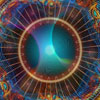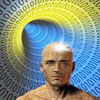Interdimensional Solar Mechanics ~ Part I
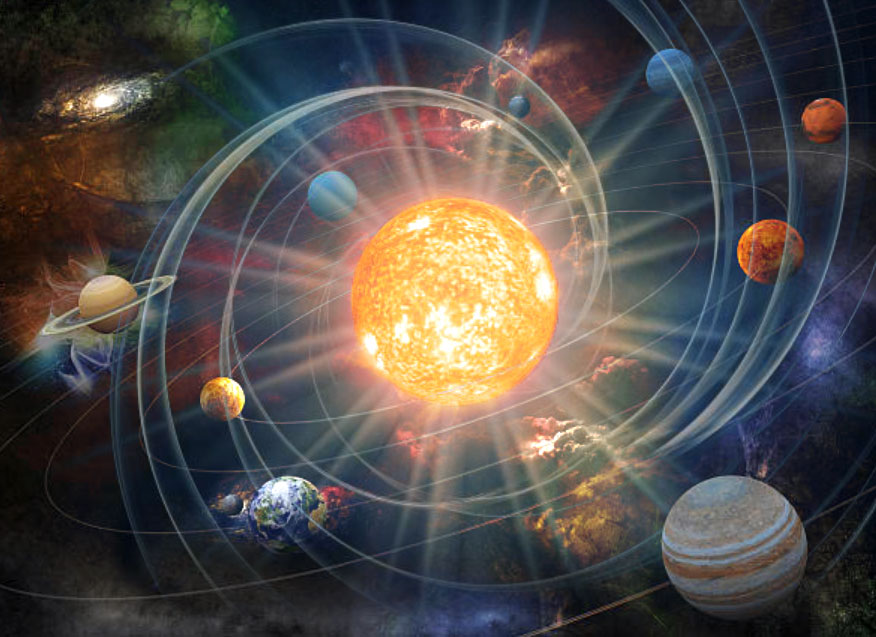 by Ernest L. Norman
by Ernest L. Norman
Present-day theory of light and heat produced by the sun is as follows:
The following taken from the San Diego Tribune – Aug. 19, 1971
Inside the sun, gas particles, or atoms, are packed so tightly together that they break apart. An atom is made up of an inner part (or nucleus) and an outer part. Deep inside the sun the outer parts of the gas atoms have all been stripped away from the nuclei. A gas made up of atoms that are broken apart is called a plasma.
The temperature of the plasma at the sun’s center is probably 27,000,000 degrees Fahrenheit or higher. At this high temperature, reactions can take place between the nuclei of atoms, which we call nuclear reactions. The nuclear reactions taking place inside the sun are nuclear fusion reactions. The nuclei of two or more atoms point together, or fuse, producing a large amount of light and heat. Billions of atomic nuclei join together within the sun every second. These reactions are the source of the sun’s energy.
The energy produced by nuclear fusion inside the sun has to escape or else the sun would explode. The energy flows from the center of the sun to the photosphere, (the sun’s surface, which is a layer of gases a few hundred miles thick).
The energy is then emitted from the sun’s surface as heat and light and other forms of radiation. A tiny amount of matter taking part in a fusion reaction produces a large amount of energy. Because the sun is so huge, it can keep burning for billions of years before it runs out of its nuclear fuel.
This article was carried in the San Diego Tribune, August 19, 1971, the very next morning after I gave the foregoing dissertations. Again, no reasons or causes were given why atoms condense so tightly as to form a sun and where do these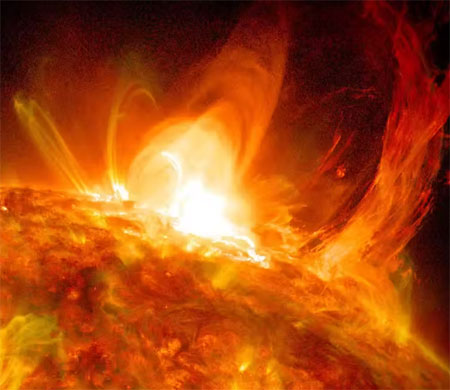 atoms come from? Again, where or what causes these actions to take place? What causes the 27 million degrees Fahrenheit temperatures? Why does all the “action” take place in the photosphere and chromosphere and where pressures are less than in the sun’s center?
atoms come from? Again, where or what causes these actions to take place? What causes the 27 million degrees Fahrenheit temperatures? Why does all the “action” take place in the photosphere and chromosphere and where pressures are less than in the sun’s center?
Again, there is clearly indicated a complete and total lack of interdimensional knowledge which would give scientists and laymen a comprehensive understanding of not only the sun but of all creation and it could be taught to growing children in their school curriculums.
As a note of interest, the above essay, reprinted from a local newspaper is one of a series of daily essays  composed by science students in different high schools throughout the area, a prize–not noted–being given for the essay chosen for printing. This article also quite obviously points out certain disparities, missing elements and certain other factors which should be included in this or any particular segment of science being taught to students, and a comparison with this article and previous presentations which I have just made will clearly point out all of the disparities, missing factors and elements.
composed by science students in different high schools throughout the area, a prize–not noted–being given for the essay chosen for printing. This article also quite obviously points out certain disparities, missing elements and certain other factors which should be included in this or any particular segment of science being taught to students, and a comparison with this article and previous presentations which I have just made will clearly point out all of the disparities, missing factors and elements.
When I was about the same age, (twelve or thirteen) and on entering my 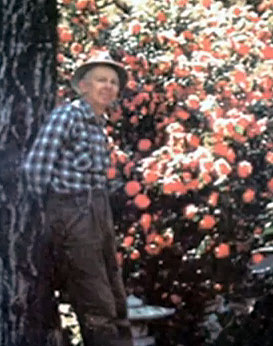 seventh grade science class, I immediately went on the mat, so to speak, with the science teacher about certain false concepts which were contained in our science book and which concerned the phases of the moon, eclipses, et cetera. In order to prove all points I constructed a crude working model of the solar system; a lighted candle for the sun, balls of different sizes and colors rotated by wires, which proved conclusively that I was right. As might be expected, this produced a tremendous upheaval and the banishment of these science textbooks, and a red-faced science teacher who left me strictly alone henceforth.
seventh grade science class, I immediately went on the mat, so to speak, with the science teacher about certain false concepts which were contained in our science book and which concerned the phases of the moon, eclipses, et cetera. In order to prove all points I constructed a crude working model of the solar system; a lighted candle for the sun, balls of different sizes and colors rotated by wires, which proved conclusively that I was right. As might be expected, this produced a tremendous upheaval and the banishment of these science textbooks, and a red-faced science teacher who left me strictly alone henceforth.
Of course, this immediately suggests and brings to mind a certain obvious fact; about 99.9% of all students attending schools, meekly accept without question,  all the established rhetorics which have been developed in the wind-up of our civilization–old wives’ tales, claptrap, superstitions, vagaries, innuendos and a complete absence of the most important aspects and relationships of life on the planet Earth in regard to the interdimensional cosmos and the ever-creative principles constantly in action, all of which would give a new vitality to our educational systems, and if properly administered and taught, would present the incumbent total morality, which would mitigate or eliminate most of the insolvable problems now confronting our society such as drug abuse, sexual promiscuity, contempt for the basic values of this society, law, respect for the rights of others, et cetera.
all the established rhetorics which have been developed in the wind-up of our civilization–old wives’ tales, claptrap, superstitions, vagaries, innuendos and a complete absence of the most important aspects and relationships of life on the planet Earth in regard to the interdimensional cosmos and the ever-creative principles constantly in action, all of which would give a new vitality to our educational systems, and if properly administered and taught, would present the incumbent total morality, which would mitigate or eliminate most of the insolvable problems now confronting our society such as drug abuse, sexual promiscuity, contempt for the basic values of this society, law, respect for the rights of others, et cetera.
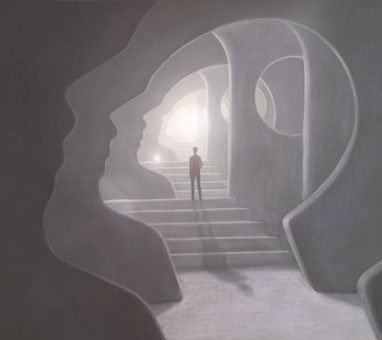 Such knowledge and learning of all creative interdimensional faculties and principles would also eliminate the age-old superstitions which are covered and practiced by all denominational churches and their religious practices, again replaced by the new morality and an assuredness of future immortality, to be realized either in progressive reincarnation, or eventual development into an advanced life form, living in a Higher World.
Such knowledge and learning of all creative interdimensional faculties and principles would also eliminate the age-old superstitions which are covered and practiced by all denominational churches and their religious practices, again replaced by the new morality and an assuredness of future immortality, to be realized either in progressive reincarnation, or eventual development into an advanced life form, living in a Higher World.
To those few then who speak out against the rhetorics of their time, they who  are the emancipator’s of ignorance and despair, may they live forever in the hearts of those who have been freed from these earth world tyrannies, for they are the Shining Angels who go among the masses of humanity in these earth worlds to guide the way for those who have dedicated themselves to finding a way to live closer to the mainstream of Infinite Intelligence.
are the emancipator’s of ignorance and despair, may they live forever in the hearts of those who have been freed from these earth world tyrannies, for they are the Shining Angels who go among the masses of humanity in these earth worlds to guide the way for those who have dedicated themselves to finding a way to live closer to the mainstream of Infinite Intelligence.
In the essay composed by the student in the newspaper, it is said 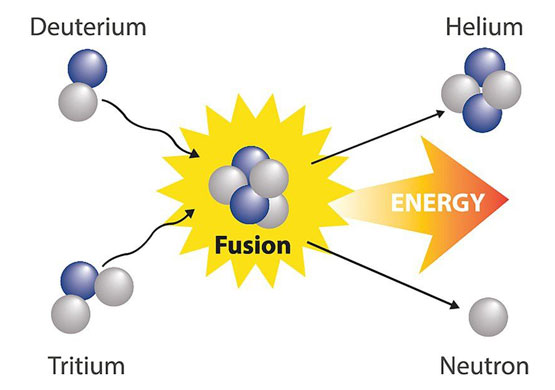 that in the fusion process going on in the photosphere of the sun, an electron would be stripped from the nucleus or proton of the atom. Now, this would immediately suggest certain implications. As almost everyone knows or should know, an atom is extremely difficult to break apart, or to otherwise change–a fact which makes our third dimensional world possible. Were this not so, the different repercussive forces and agencies which are constantly in motion about us would eventually subdivide all atomic forms into nothingness; so therefore, this leads us to an inevitable conclusion; that an atom, while it is extremely small, it is also extremely hard.
that in the fusion process going on in the photosphere of the sun, an electron would be stripped from the nucleus or proton of the atom. Now, this would immediately suggest certain implications. As almost everyone knows or should know, an atom is extremely difficult to break apart, or to otherwise change–a fact which makes our third dimensional world possible. Were this not so, the different repercussive forces and agencies which are constantly in motion about us would eventually subdivide all atomic forms into nothingness; so therefore, this leads us to an inevitable conclusion; that an atom, while it is extremely small, it is also extremely hard.
Also, an atom is energy, and so if it is not solid but is actually composed of oscillating energy wave forms, how is 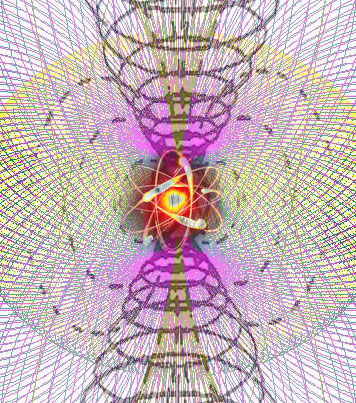 this solidity achieved? As I said: through a very strong shell of electromagnetic wave forms which are generated in harmony with the vortex which formed the atom as its central nucleus, on this basis then, atoms either repel each other or they are very strongly attracted to each other on the basis of this electromagnetic field. Some of these electromagnetic wave forms extend beyond the immediate shell of the atom itself and which makes adhesion possible. Also, an atom is oscillating at extreme velocities or frequencies. The scientist of today has not seen an atom; it is so small you could put about 200,000 of them on the head of a pin and still not be able to see them, and it might take anywhere from one to ten million diameters of magnification before an atom could even be seen as a tiny streak.
this solidity achieved? As I said: through a very strong shell of electromagnetic wave forms which are generated in harmony with the vortex which formed the atom as its central nucleus, on this basis then, atoms either repel each other or they are very strongly attracted to each other on the basis of this electromagnetic field. Some of these electromagnetic wave forms extend beyond the immediate shell of the atom itself and which makes adhesion possible. Also, an atom is oscillating at extreme velocities or frequencies. The scientist of today has not seen an atom; it is so small you could put about 200,000 of them on the head of a pin and still not be able to see them, and it might take anywhere from one to ten million diameters of magnification before an atom could even be seen as a tiny streak.
 Remember the viruses? Well, science has taken pictures of viruses. They use an electron microscope which can magnify up to about 20,000 diameters; then, by using the photographs taken at this magnification, they can enlarge these pictures so that a theoretical 100,000 diameters of magnification is achieved. However, remember that a virus is composed of hundreds or even thousands of molecules, and each molecule in turn could be very easily composed of hundreds or even thousands of atoms and so on, ad infinitum. So the proposition here becomes a little more complex.
Remember the viruses? Well, science has taken pictures of viruses. They use an electron microscope which can magnify up to about 20,000 diameters; then, by using the photographs taken at this magnification, they can enlarge these pictures so that a theoretical 100,000 diameters of magnification is achieved. However, remember that a virus is composed of hundreds or even thousands of molecules, and each molecule in turn could be very easily composed of hundreds or even thousands of atoms and so on, ad infinitum. So the proposition here becomes a little more complex.
Now, what is the determinant in this oscillating frequency between atoms? There are certain similarities, in 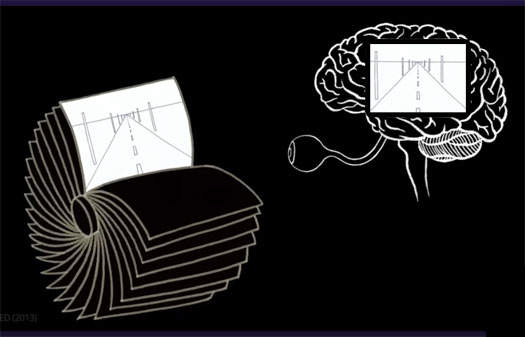 more familiar objectivisms, which can be achieved here about us on Earth. For example: looking at an ordinary motion picture, the individual pictures or frames, as they were photographed on the film, go through the gate of the projector and are exposed to the light at about 18 to 22 frames or pictures per second. Now, your eye cannot distinguish anything faster than 18 times per second, so that at 22 frames per second, the movement of the film through the gate becomes invisible to you and the subsequent differences in each of the succeeding frames gives the illusion that the picture is moving. It’s pretty much the same with atoms versus mass.
more familiar objectivisms, which can be achieved here about us on Earth. For example: looking at an ordinary motion picture, the individual pictures or frames, as they were photographed on the film, go through the gate of the projector and are exposed to the light at about 18 to 22 frames or pictures per second. Now, your eye cannot distinguish anything faster than 18 times per second, so that at 22 frames per second, the movement of the film through the gate becomes invisible to you and the subsequent differences in each of the succeeding frames gives the illusion that the picture is moving. It’s pretty much the same with atoms versus mass.
Other similarities include the fluorescent light tube with which we are familiar, or the neon light which lights up our cities at night. The proposition with the fluorescent tube or neon light is quite simple: a glass tube is coated on the inside with a fluorescent material such as a phosphor compound and the air is then pumped out of the tube and replaced with one of the noble gases, usually neon. There are also other gases which serve this purpose such as xenon, et cetera.
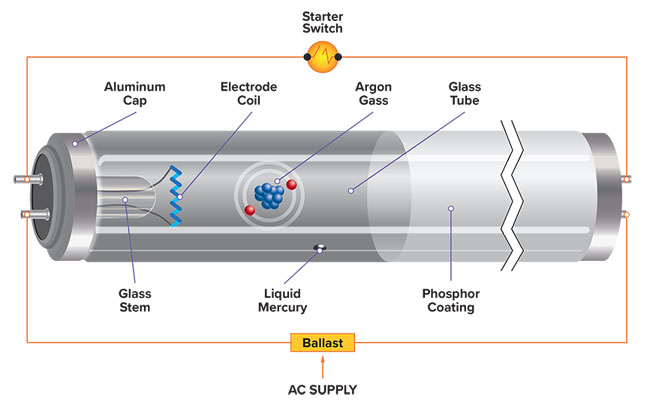 Now, all of these gases have a certain peculiarity; that is, they can conduct an electrical wave form of energy according to how they are polarized–the scientist calls such polarization ionization–so that the gases inside the tube can actually become conductive to a wave form by assuming this certain positive or negative ionization, and so the electrodes fastened on each end of this glass tube contain an alternating current which oscillates at sixty cycles per second.
Now, all of these gases have a certain peculiarity; that is, they can conduct an electrical wave form of energy according to how they are polarized–the scientist calls such polarization ionization–so that the gases inside the tube can actually become conductive to a wave form by assuming this certain positive or negative ionization, and so the electrodes fastened on each end of this glass tube contain an alternating current which oscillates at sixty cycles per second.
 Now, on one-half of the wave form, the gases inside the tube assume a certain polarity and become conductive to the electricity on that end of the tube, and as the energy passes through the ionized gas to the other end, it completes one-half of the sixty-cycle oscillation. Then the ionization polarities are reversed and conduct the electricity on the other half of the cycle back to the other end of the tube. This goes on at the rate of sixty times per second, back and forth, to complete the total cycle. Meanwhile, the phosphorous coatings on the inside surface of the tube retain the impulses of light frequencies to a certain degree–a faculty called purveyance–and so the illusion of a steady light is maintained by your eye. However, if you move your head rapidly enough, you can synchronously attune your eyesight and actually be able to see one-half of this cycle as a subharmonic. By glancing rapidly across the top of the table for example, you can distinctly see the fluctuating impulses of light so that, here again, the fluorescent tube is actually dark for thirty times per second and is illuminated for the other thirty times per second. It goes off and on at the rate of sixty times per second.
Now, on one-half of the wave form, the gases inside the tube assume a certain polarity and become conductive to the electricity on that end of the tube, and as the energy passes through the ionized gas to the other end, it completes one-half of the sixty-cycle oscillation. Then the ionization polarities are reversed and conduct the electricity on the other half of the cycle back to the other end of the tube. This goes on at the rate of sixty times per second, back and forth, to complete the total cycle. Meanwhile, the phosphorous coatings on the inside surface of the tube retain the impulses of light frequencies to a certain degree–a faculty called purveyance–and so the illusion of a steady light is maintained by your eye. However, if you move your head rapidly enough, you can synchronously attune your eyesight and actually be able to see one-half of this cycle as a subharmonic. By glancing rapidly across the top of the table for example, you can distinctly see the fluctuating impulses of light so that, here again, the fluorescent tube is actually dark for thirty times per second and is illuminated for the other thirty times per second. It goes off and on at the rate of sixty times per second.
It is pretty much the same way with atoms versus molecules as they compose the different mass forms within this world with which we are familiar except of course, that all of these electronic impulses are electromagnetic in nature and sustain themselves on the basis that they can either repel or attract each other. It is extremely difficult to break an atom apart, as any physicist (or for that matter even a high school boy) can tell you. At the big universities such as Berkeley here in California, they use cyclotrons or bevatrons to break up atoms and to attain what they call a neutron flow of energy.
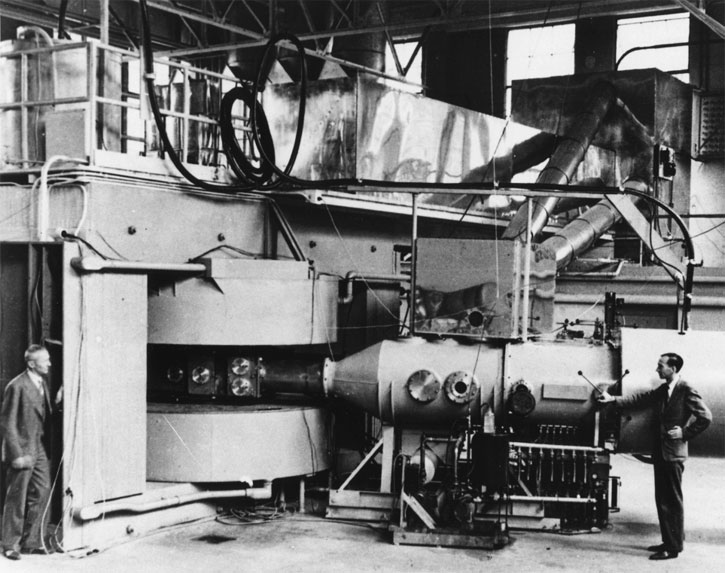 A cyclotron or a bevatron is simply either a circular or a long line of powerful electromagnets. These are malleable iron cores wrapped with coils and they become saturated with electromagnetic flux when the electricity passes through the coil. So they start hydrogen atoms out at one end of this long line of coils and by successively alternating the polarities of these magnets, they can make these different hydrogen gas particles accelerate to tremendous speeds into what they call millions of electron volts.
A cyclotron or a bevatron is simply either a circular or a long line of powerful electromagnets. These are malleable iron cores wrapped with coils and they become saturated with electromagnetic flux when the electricity passes through the coil. So they start hydrogen atoms out at one end of this long line of coils and by successively alternating the polarities of these magnets, they can make these different hydrogen gas particles accelerate to tremendous speeds into what they call millions of electron volts.
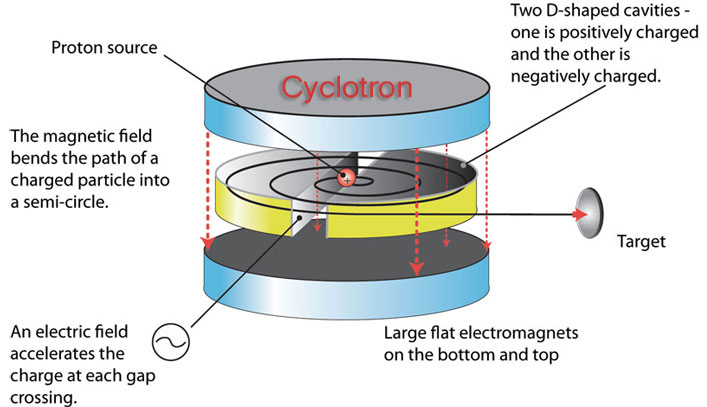 At such incredible speeds, these atoms begin to collide, and as they collide, certain ones will break up or fall apart, so to speak, and as heavy hydrogen is simply a proton, a neutron and an electron, then the neutrons can, by means of certain deflection plates, be siphoned or funneled off this long line of magnets toward the end where it will form a certain line of neutronic impulses, very similar to what might be called a lightning bolt–except on a very small scale.
At such incredible speeds, these atoms begin to collide, and as they collide, certain ones will break up or fall apart, so to speak, and as heavy hydrogen is simply a proton, a neutron and an electron, then the neutrons can, by means of certain deflection plates, be siphoned or funneled off this long line of magnets toward the end where it will form a certain line of neutronic impulses, very similar to what might be called a lightning bolt–except on a very small scale.
By studying such reactions which are involved in the net sum and process, the scientist hopes to gain some sort 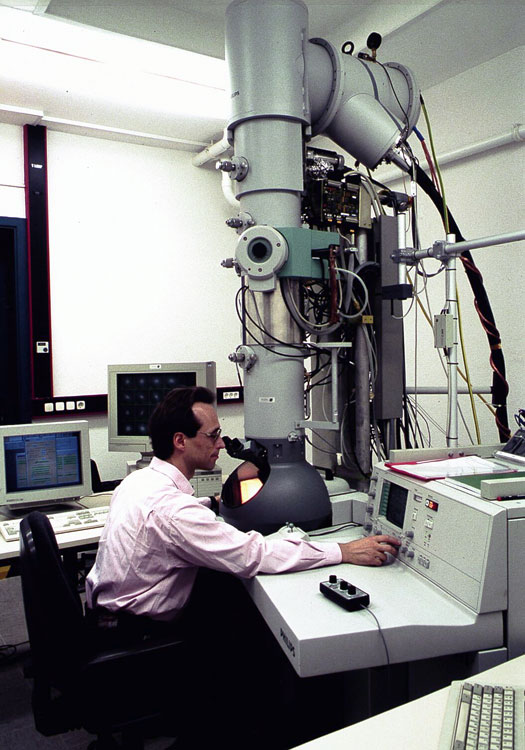 of a comprehensive idea as to what an atom is and what holds it together. As you see, I have that all down on paper and tape, so it wasn’t really necessary to spend hundreds of millions of dollars to construct these bevatrons and cyclotrons and to pay fancy salaries to these physicists to try to break up an atom. An old boy like myself could have described the process of what an atom is and what holds it together very simply and very easily. Of course, it would take a little imagination on the part of the physicist, and it might strain his intellectual capacity to the breaking point and he would either very severely reject the whole thing and call me a nut, or he would in some other way be very seriously deflated in his ego. To say the least, he could very well lose his position and his high-paying salary while he was fooling around with his bevatron. And so the story goes.
of a comprehensive idea as to what an atom is and what holds it together. As you see, I have that all down on paper and tape, so it wasn’t really necessary to spend hundreds of millions of dollars to construct these bevatrons and cyclotrons and to pay fancy salaries to these physicists to try to break up an atom. An old boy like myself could have described the process of what an atom is and what holds it together very simply and very easily. Of course, it would take a little imagination on the part of the physicist, and it might strain his intellectual capacity to the breaking point and he would either very severely reject the whole thing and call me a nut, or he would in some other way be very seriously deflated in his ego. To say the least, he could very well lose his position and his high-paying salary while he was fooling around with his bevatron. And so the story goes.
Excerpt from Tempus Interludium, Vol. 1
See Part II here.
Posted in Book Excerpts, Tempus Interludiumwith comments disabled.



